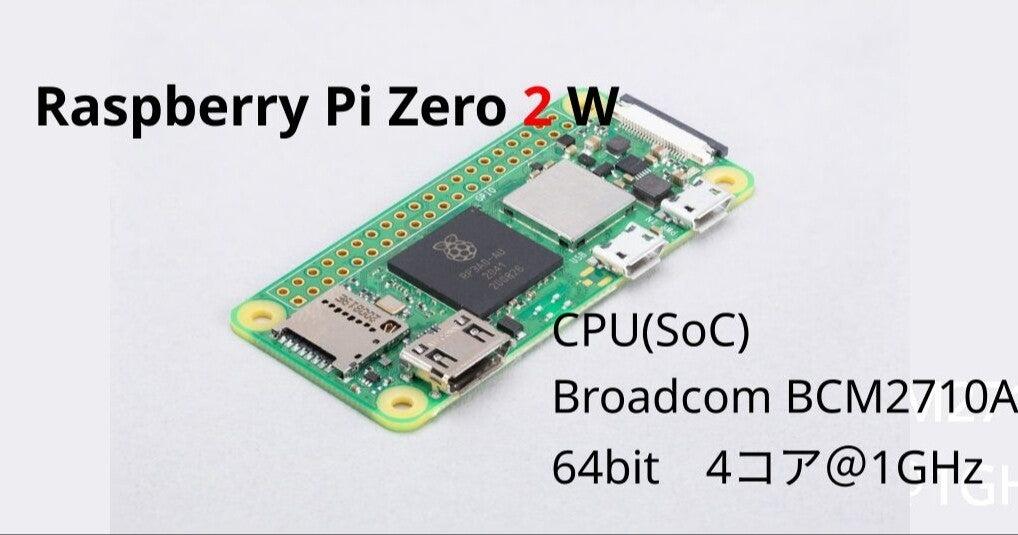"Raspberry Pi Zero 2 W" Review--Significantly improved performance with quad-core CPU
The Raspberry Pi Zero 2 W has the same form factor as previous models, but with the addition of a quad-core RP3A0 SoC. Courtesy: Raspberry Pi
The "Raspberry Pi Zero" has been available for six years, and the first model was launched in November 2015 as a USB-only device for $ 5. The form factor has evolved over the years, with the addition of a $ 10 wireless model in 2017 and the launch of pre-soldered headers in 2018. However, there is one thing that hasn't changed during that time. It's a processor. The familiar "BCM2835" that was installed in the first "Raspberry Pi" in 2012 has been adopted for a long time.
Adopting for nearly a decade is good for a processor, but as workloads evolved and the complexity of projects built on Pi increased, the BCM2835 became more and more old. I recently tried using a Raspberry Pi Zero WH connected to a 4-inch touchscreen for a simple surveillance project, but soon replaced it with a Raspberry Pi 4. Even so, due to the current chip shortage, the supply of Pi Zero began to run out faster than expected. Was it ready to launch the new Pi Zero?

The expectation seems to have been correct.
Silicon package for the new Raspberry Pi
Still, I was a little surprised by the launch of the $ 15 Raspberry Pi Zero 2 W. Not only is this new model significantly faster, it also incorporates a new silicon package, the RP3A0, specifically for the Raspberry Pi. Centered around the same quad-core 64-bit "ARM Cortex-A53" SoC ("BCM2710A1") as the "Raspberry Pi 3," 512MB of SDRAM is integrated into the processor die, and the memory is in the same package as the SoC. In addition, it also includes its own copper heatsink, so the Pi Zero 2 W should run cooler than its predecessor when operating at 1GHz. Unlike the RP2040, it's not the silicon originally developed by the Raspberry Pi Foundation, but the foundation adds its own interpretation to the silicon package.
While it may seem logical that the Raspberry Pi team will continue to add features to the major family of single-board computers, it's actually possible to offer smaller, lower-priced versions of previously launched products. Makes a lot of sense. Not everyone needs the powerful performance of the Raspberry Pi 4. With Pi Zero 2 W, you can use everything you've learned to create smaller versions of your existing builds, and embark on a hardware project that was postponed because you didn't have a small enough computing module. You can also.
That is another advantage of Pi Zero 2 W. The product itself is certified for wireless modules, so no new certification is required to incorporate it into the hardware. Prototyping is always difficult to commercialize, but being able to make a prototype part of a product can save a lot of time. By building on the Pi platform, it will also be possible to update both the software and the OS wirelessly.
Comparison of old and new
If you put Pi Zero 2 side by side with Pi Zero, you'll see that the difference is very small. The size of the board remains the same, 65mm x 30mm, and the mounting holes are the same. The new RP3A0 chip occupies most of the board, and the large shield next to it contains all the wireless circuitry. Like its predecessor, it has two Micro-USB ports (one for power and one for OTG-based I / O) and one Mini-HDMI port. Everything is in the same place, so you should be able to replace this new board with the old Pi Zero. However, the HDMI port can be a bit of a problem. The sockets are slightly larger, so if you've made your own case with a 3D printer, you may need to make a few design changes.
Other ports include a standard Raspberry Pi camera port and a pinout for the Pi's GPIO port. Currently, the Pi Zero 2 does not come with a set of header pins like the Pi Zero WH, so you have to solder it yourself. It's not too difficult, but it's a good idea to practice before applying the soldering iron to the Pi. If you plan to use HAT with Pi Zero 2 W, adding a header is essential.
